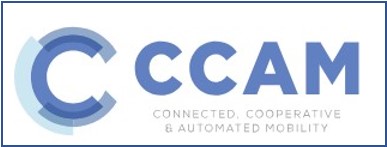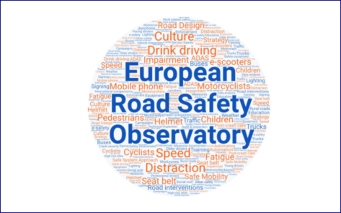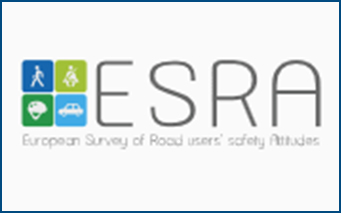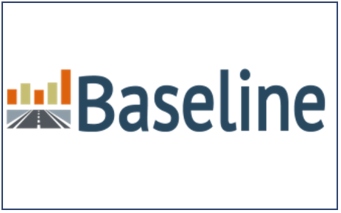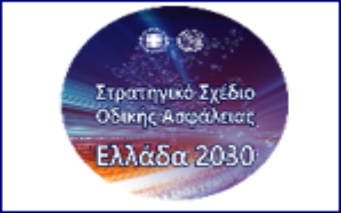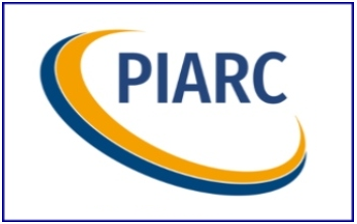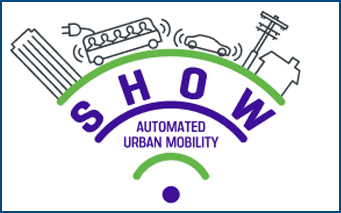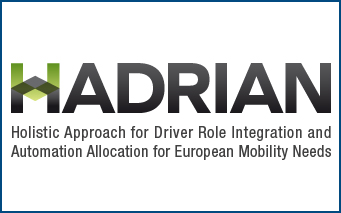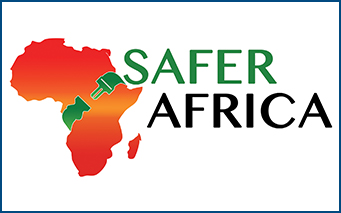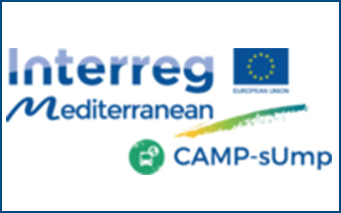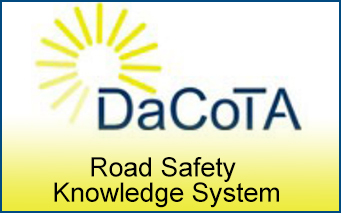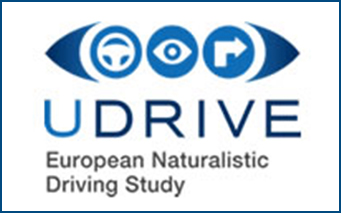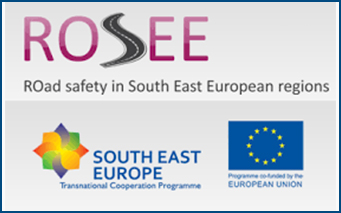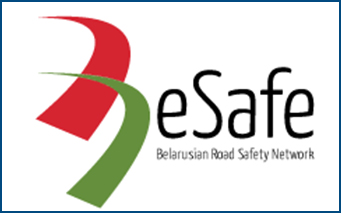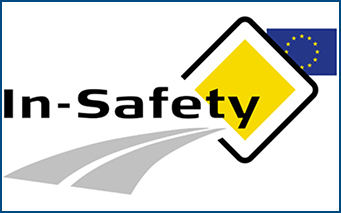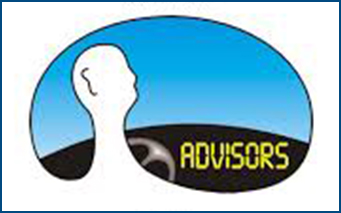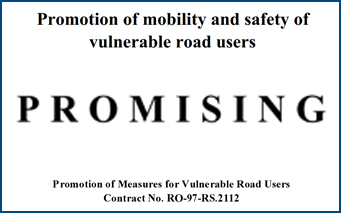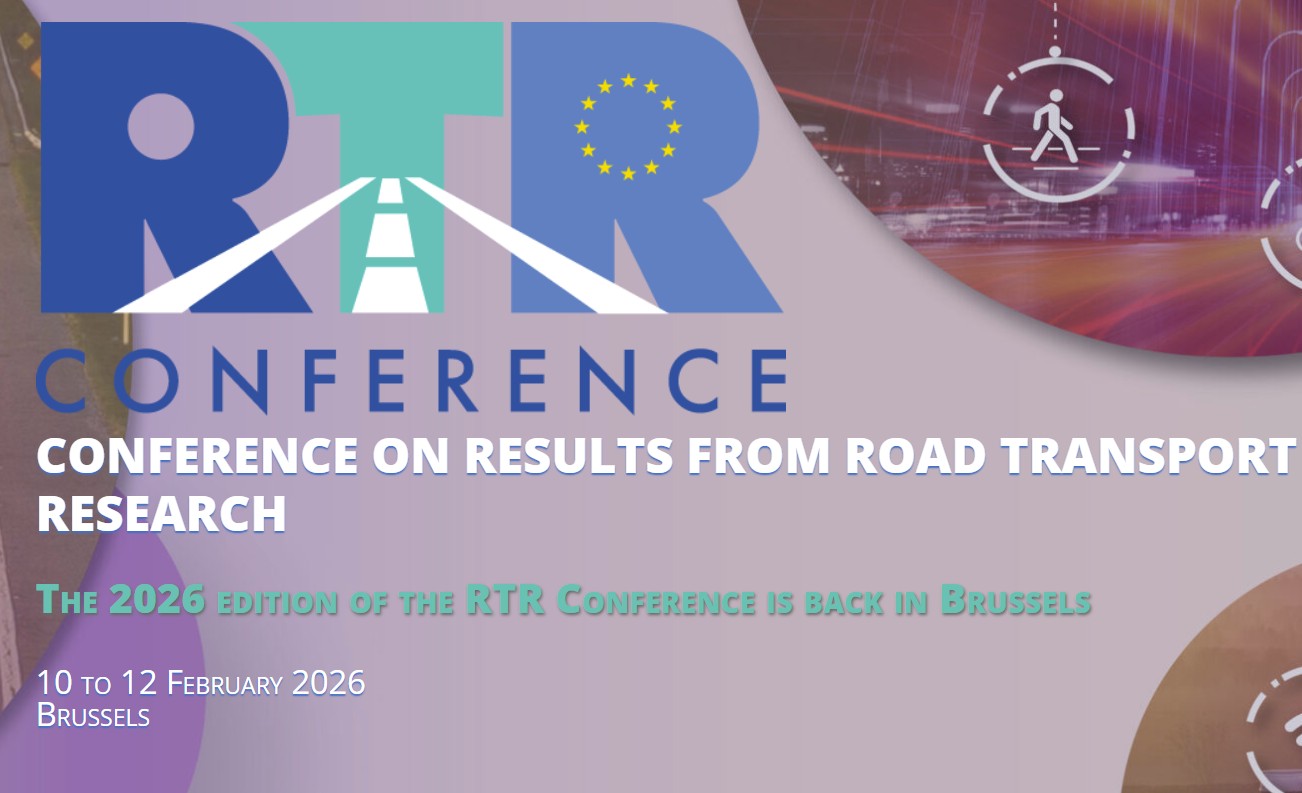Author: Ioannis Papadogiorgakis

A NTUA Diploma Thesis titled “Investigation of Non-Compliant Pedestrian Crossings at Signalized Intersections Using Computer Vision Techniques” was recently presented by Natalia Mirogianni. To achieve this objective, an advanced video-based detection algorithm using data collected from a high-traffic intersection in Omonoia Square, in Athens was utilized. The dataset included detailed pedestrian and vehicle coordinates and speed characteristics, signal timing, and time-to-collision metric. The analysis consisted logistic regression, random forest classification, and point-biserial correlation to identify significant predictors of non-compliant behaviour and also to compare the effectiveness of the manual field and computer vision algorithm results. The findings contribute to the understanding of pedestrian violations and offer valuable insights for future implementation of automated monitoring systems and policy interventions for safer crosswalks. 


A NTUA Diploma Thesis titled “The impact of connected and autonomous vehicles on road safety with use of simulation” was recently presented by Aikaterini Kalliakoudi. For this purpose an analysis based on simulation data derived from nine scenarios implemented in the city center of Athens was conducted. Additionally, traffic and geometric characteristics of the locations where the conflicts occurred were documented. The statistical analysis was carried out through the development of three models: two multiple linear regression models and one multinomial logistic regression model. The results indicated that the influencing factors for the above variables are related both to traffic composition (e.g., vehicle types) and infrastructure characteristics (e.g., speed limit, capacity). Furthermore, the increase in AV/CAV penetration in the network was found to have a positive impact on road safety, significantly reducing the number of vehicle conflicts. 


A NTUA Diploma Thesis titled “Factors Influencing Speed Limit Violations on Athens Road Network” was recently presented by Daphne Kyprouli. For this reason data collected by OSeven Telematics and OpenStreetMaps, which includes information such as road geometry indicators, safety measurements and driving behavior metrics were utilized. The analysis consisted statistical models and machine learning algorithms aiming to predict speeding violations and understand the factors influencing them, with overall ten models created. The results demonstrated that speeding has a statistically significant correlation with various variables and improving driving behavior will consequently lead to a reduction of road crashes. The main factors affecting the likelihood of speeding in the examined road sections are the number of trips, the road section length and the percentage of mobile phone use, while slopes presented the least impact. 


A NTUA Diploma Thesis titled “Critical factors of self reported behaviour and safety of electric scooter users in Europe” was recently presented by Ibabi Hasim. For this reason statistical models were utilized in order to analyze the factors that lead electric scooter users to engage in dangerous driving behaviors, based on data from the third edition of the international ESRA survey (E-Survey on Road Users’ Attitudes). Findings highlight the importance of factors such as the acceptance of risky behaviors, the existence of legislation, the level of urbanization, and age. Furthermore, mandatory helmet use and stricter rules prove to be particularly effective in reducing violations. Finally, some proposals are provided that could improve the road safety of electric scooter users, such as strengthening the legal framework, stricter enforcement, and infrastructure improvement. 


The Horizon Europe research project CulturalRoad has recently released the CulturalRoad 2nd Newsletter, which provides information on the latest outcomes of the EU-funded CulturalRoad Project aiming to develop innovative methodologies to ensure the equitable deployment of Cooperative, Connected, and Automated Mobility (CCAM) services. This version of the Newsletter announced the release of the Project’s first animated video, a perfect way to learn more about the Project, by presenting its vision for more equitable, inclusive and connected mobility. It also emphasizes on the five key pillars of mobility equity and the Five-Pointed Rating Star System, designed to evaluate the level of equity of CCAM systems within their specific environments. 

The Ministry of Transport, Communications and Works of Cyprus organized a Meeting on the implementation of 20/30 km/h speed limit zones in urban areas which took place online, on 25 July 2025. This Event brought together representatives from the Ministry of Transport, Communications and Works and Municipalities of Cyprus to discuss relevant policy recommendations, supporting Cyprus initiative to adopt 20/30 km/h speed limits nationwide. NTUA actively contributed with the following presentation:

Dimitris Nikolaou, Eva Michelaraki, Armira Kontaxi, Julia Roussou, Maria G. Oikonomou, Marios Sekadakis and Stella Roussou, Research Associates of the Department of Transportation Planning and Engineering of NTUA were awarded with the NTUA Thomaidion Award for outstanding road safety publications in scientific journals. The Awards for publications in Scientific Journals concerned:
- Nikolaou D., Ziakopoulos A. & Yannis G. (2023) A Review of Surrogate Safety Measures Uses in Historical Crash Investigations, Sustainability, 15(9).

- Michelaraki E., Katrakazas C., Kaiser S., Brijs T. & Yannis G. (2023) Real-time monitoring of driver distraction: state-of-the-art and future insights, Accident Analysis and Prevention, Volume 193.

- Kontaxi A., Tzoutzoulis D., Ziakopoulos A. & Yannis G. (2023) Exploring speeding behavior using naturalistic car driving data from smartphones, Journal of Traffic and Transportation Engineering,10(6).

- Nikolaou D., Ziakopoulos A., Dragomanovits A., Roussou J. & Yannis G. (2023) Comparing Machine Learning Techniques for Predictions of Motorway Segment Crash Risk Level, Safety, Volume 9(2), Issue 32.

- Oikonomou G. M., Ziakopoulos A., Chaudhry A., Thomas P. & Yannis G. (2023) From conflicts to crashes: Simulating macroscopic connected and automated driving vehicle safety, Accident Analysis & Prevention, Volume 187.

- Sekadakis M., Katrakazas C., Michelaraki E., Ziakopoulos A. & Yannis G. (2023) COVID-19 and driving behavior: Which were the most crucial influencing factors, Data Science for Transportation, 16(5).

- Roussou S., Garefalakis T., Michelaraki E., Katrakazas C., Adnan M., Khattak M., Brijs T. & Yannis G. (2023) Examination of the Effect of Task Complexity and Coping Capacity on Driving Risk: A Cross-Country and Transportation Mode Comparative Study, Sensors 2023, 23(24).

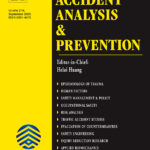
A paper titled Safety contributing factors analysis of older vulnerable road users: General and local perspectives authored by Xueyu Zhang, Xueson Wang, Mohamed Abdel-Aty, George Yannis and Guangzhu Luo has been published in Accident Analysis & Prevention. This paper utilizes an analytic approach to explore the effects of contributing factors for older vulnerable road users’ (VRUs) crashes, with particular attention to the integration of general and local analysis. Socio-economic, road network, public facility, traffic enforcement and older VRU crashes were collected in the grids and gradient tree-boosted Tweedie compound Poisson models as well as geographically weighted random forests were employed. The findings suggest that population and healthcare played an important role in predicting older VRU crashes. The concentration areas for older people, including healthcare facilities, markets, and bus stops, demonstrate that improvement countermeasures should adapt to local conditions. 

NTUA has recently released the 2025 version of Key Road Safety Performance Indicators in Greece in the framework of the EU project Trendline. These KPIs are derived from nationwide field observations in 2025 on four key Road Safety Performance Indicators (KPIs): speed, seatbelt use, helmet use, and driver distraction. Key findings show that only 71% of vehicles on rural roads complied with speed limits (less than in 2022), seatbelt use among rear passengers remained as low as 57%, helmet use increased for both front (85%) and rear riders (60%) and mobile phone use increased on rural roads (12%). These results provide valuable evidence for targeted road safety interventions and the future alignment of Greece with national and EU safety targets. 

The University of Thessaly, Department of Civil Engineering, Traffic, Transportation and Logistics Laboratory (TTLog) in cooperation with the University of Kentucky and the University of Alabama at Birmingham are organizing the 8th Conference on Sustainable Mobility which will take place in Skyros, Greece on 1-3 July 2026. The theme of this year’s Conference is: “Green and Digital Transition”, aiming to explore how digital technologies, such as AI, big data, automation, and connectivity, can work hand-in-hand with green policies, renewable energy, and low-emission solutions to transform mobility. Researchers can submit their abstracts until 1 October 2025. 

A paper titled Trajectory-based indicators to determine the local character of intersection conflicts: A micro-spatial analysis authored by Andreas Hula, Apostolos Ziakopoulos, Angel Losada, Andrea Schaub, Peter Saleh and George Yannis has been published in Accident Analysis & Prevention. This paper utilizes the Mobility Observation Box (MOB), which provides a flexible data collection to be used in subsequent video analysis. To facilitate potential MOB uses, this study leverages over 51 h of naturalistic video data at a busy Vienna intersection to advance road safety research, by employing random parameters binary modelling of the likelihood of critical conflict occurrence and Gaussian generalized additive spatial modelling to identify key factors influencing the absolute values of conflict angles on critical conflicts only. The findings suggest that all road user types were ultimately less likely to be involved in safety–critical conflicts compared to cars in both leading and following roles, with the exception of cyclists in the leading role. Within the micro-spatial analysis, the kinematic parameters of the second road user only (speed, max acceleration and max deceleration), the duration of the interaction as well as intersection-specific local effects related to the position of the leading road user were all found to influence the transformed absolute value of the angles of critical conflicts. 

Simone Paradiso, NTUA PhD Candidate & Researcher, received the Best Poster Award during the Porsche Symposium for Scientific and Practical Progress in AI, which was held in Stuttgart, on 26 June 2025 as part of the GSERM St. Gallen Summer School 2025. The Symposium included keynote speeches, discussions and a poster session focusing on Generative AI with LLMs. The award for the best poster concerned:

OASA together with NTUA organized with great success the OASA Electrification Workshop which was held on 4 July 2025, in Athens, as part of the Horizon Europe project metaCCAZE. The event marked a significant step forward in co-designing the future of clean, efficient, and citizen-centered public transport in the Greek capital. Particular attention was given to the safety aspects of electric buses. Participants included representatives from OASA, OSY, NTUA, DEDDIE, the Greek Ministry of Transport and other local and national actors involved in sustainable mobility.  NTUA actively contributed with the following presentation:
NTUA actively contributed with the following presentation:

The International Traffic Safety Data and Analysis Group (IRTAD) of the International Transport Forum (ITF/OECD) and the Department of Transportation Planning and Engineering of NTUA are co-organizing the 8th IRTAD International Conference: Better Road Safety Data for Better Safety Performance which will be held in Athens, Greece, on 15-17 April 2026, with the support of FERSI, ECTRI and HITE. The objectives of the Conference are to discuss improvements in the quality of data systems and data analysis globally, by fostering knowledge transfer among participants, with particular emphasis on road safety performance. The Conference is open to all and is primarily for the attention of road safety researchers, data analysts, those involved in collecting safety data and developing databases, and all those using the results of research to advise decision makers on road safety matters. 

A new book titled The Routledge Handbook of Sustainable Urban Transport edited by Lucy Budd, Stephen Ison and Maria Attard has been recently published. This Handbook offers a comprehensive exploration of urban transport sectors, as well as the challenges, impacts and issues being faced. Furthermore, this Monograph exploits technical, social and economic solutions for sustainable urban transport. NTUA actively contributed with the following chapter, co-authored by George Yannis and Eleonora Papadimitriou:
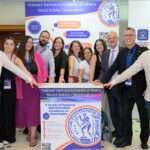
The Institute of Communications & Computer Systems (ICCS) together with International Road Federation (IRF) and several other Organizations, organized with great success the International Symposium Navigating the Future of Traffic Management in Athens, Greece on 29 June – 3 July 2025. This Conference focused on four thematic tracks: digitalization in traffic management, sustainable mobility strategies, integrated infrastructure systems, and road safety innovations. These tracks aimed to address the complex challenges of modern traffic management and offer actionable insights for a safer and more efficient transportation future. 
 NTUA actively contributed with the following papers, posters and presentations:
NTUA actively contributed with the following papers, posters and presentations:

 Predicting Pedestrian Violations Using Object Detection and Deep Learning: A Comparative Study of LSTM & GRU Models
Predicting Pedestrian Violations Using Object Detection and Deep Learning: A Comparative Study of LSTM & GRU Models
 A Geo-Spatial Analysis of Unsafe Traffic Events and Crash Occurrence at Urban Intersections: Insights from Telematics Data and Machine Learning
A Geo-Spatial Analysis of Unsafe Traffic Events and Crash Occurrence at Urban Intersections: Insights from Telematics Data and Machine Learning
 Hybrid Modelling for Risky Driving Behavior Classification: Insights from Naturalistic Driving Study
Hybrid Modelling for Risky Driving Behavior Classification: Insights from Naturalistic Driving Study
 Preferences of Public Transport Passengers Towards Contactless Bank Card Payments
Preferences of Public Transport Passengers Towards Contactless Bank Card Payments
 Combining diverse data sources for intersection crash analyses based on incomplete records
Combining diverse data sources for intersection crash analyses based on incomplete records
 Training a YOLO-based model for speed limit sign recognition
Training a YOLO-based model for speed limit sign recognition Road Safety Knowledge Exchange in Low and Middle Income Countries
Road Safety Knowledge Exchange in Low and Middle Income Countries

The Secretariat of the African Road Safety Observatory is organizing a Webinar on road safety performance indicators which will take place online, on 14 July 2025. The webinar aims to enhance mutual learning, encourage regional alignment, and stimulate future capacity-building activities related to SPI development and use. This event will bring together national road safety coordinators, members of regional observatories, policymakers, and technical experts to explore the added value of SPIs, the use of appropriate methodologies, and good practices from Africa and other world regions.  Participation is free upon registration. Programme can be found here.
Participation is free upon registration. Programme can be found here.

BMW in cooperation with Chip Design Germany organized with great success the BMW Summer School which took place in Saint-Raphaël, France on 29 June – 4 July 2025. This year’s event focused on the topic of trust and safety in artificial intelligence, a broad field of discussion and growing relevance at the crossroads of technology, psychology, product safety, law, economics, and ethics.  NTUA actively contributed with the following presentation:
NTUA actively contributed with the following presentation:

The United Nations Department of Economic and Social Affairs announced the first ever UN Decade of Sustainable Transport 2026 – 2035 starting in 2026. The Implementation Plan of the UN Decade of Sustainable Transport is expected to serve as a strategic framework to coordinate actions, mobilize resources, and monitor progress towards sustainable transport worldwide. It will be an opportunity to further raise awareness of transport’s crucial role in advancing the Sustainable Development Goals and to gather and rally new solutions, resources and partnerships to advance sustainable transport globally. Ensuring safety in sustainable transport is essential to protect lives, reduce crashes and build trust, resilience and reliable in transport systems. 
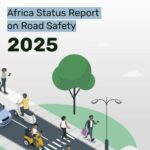
The World Bank Global Road Safety Facility (GRSF) together with SSATP has published the 2025 Status Report on Road Safety in Africa analyzing findings for road safety on the African continent. The 2025 Africa Status Report on Road Safety reveals that, despite having only 3% of the global vehicle fleet, Africa accounts for 24% of global road fatalities with 259,601 deaths annually. This highlights the urgent need for safer pedestrian and cycling facilities to protect vulnerable road users. 


The ETSC Annual Report 2024, highlights a year of impactful advocacy and cross-border collaboration in the pursuit of safer roads across Europe. From championing 30 km/h urban speed limits and tackling loopholes in EU vehicle safety regulations, to supporting EU Member States through the EU-funded Road Safety Exchange programme, ETSC continues to be a leading voice for road safety in Europe. The Report also celebrates milestones such as Finland’s PIN Award for outstanding progress on road safety, the #IWillBeALifesaver campaign, and award-winning educational initiative LEARN! 


The UN Road Safety Fund continues to support low and middle-income countries to do that by providing road safety expertise to close gaps on road safety data, enforcement practices, vehicle safety, legislative frameworks, post-crash care, urban street design, among other topics. This UNRSF 2024 Annual Report highlights how collective efforts are saving lives and driving systemic change in road safety. 

The Bloomberg Philanthropies Initiative for Global Road Safety (BIGRS) works with Governments and communities to prevent road crashes, deaths and injuries. Since 2007, the initiative has helped implement proven road safety interventions across 22 countries. Currently, the initiative is supporting work in 27 cities and two states across 15 low- and middle-income countries. Its Resources Hub includes case studies and guidance focusing on five areas: strengthening legislation and leadership, enhancing data collection and surveillance, changing road user behavior with media campaigns and enhanced enforcement, improving road infrastructure and advancing vehicle safety. 

The Horizon Europe research project metaCCAZE has recently released a new Blog Post authored by George Yannis on the new Greek Road Traffic Code. The new Road Traffic Code introduces city-wide 30 km/h speed limit in all urban streets of one or two directions with a single lane per direction, making Greece the second EU country after Spain to implement such a measure. It is also rationalising and simplifying penalties and linking them to the offences’ seriousness and magnitude. Furthermore it introduces a number of correct and necessary traffic management provisions with emphasis on motorcycles and the 30km/h speed limit in cities. 
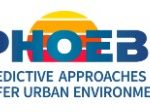
The Horizon 2020 research project PHOEBE has recently released the PHOEBE 5th Newsletter, which provides information on the latest outcomes of the EU-funded ‘Predictive Approaches for Safer Urban Environment’ (PHOEBE) project aiming to increase the road safety of vulnerable road users, especially those who use active mobility and e-scooters. Particular attention was given to the conclusion of the Project’s model development for the safety of vulnerable road users and the safety use case implementation. 
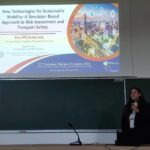
The European Platform of Transport Sciences (EPTS) organized with great success the 23rd European Transport Congress which was held in Paris, France on 26-27 June 2025, under the theme “Future of European transport: infrastructure, service and technologies“. Key topics discussed in this Conference were sustainable mobility and safety, railway transport, challenges in metropolises, airline transport and freight transport. 
 NTUA actively contributed with the following paper and presentation:
NTUA actively contributed with the following paper and presentation:
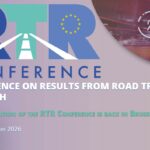
The European Commission together with 2Zero, ERTRAC, CCAM and BATT4EU are organizing the Road Transport Research Results Conference (RTR Conference) will take place in Brussels, on 10-12 February 2026. For the past eight years, the RTR Conference has been a unique entry point into the achievements of EU-funded projects in road transport. This year’s 9th edition Conference is expected to attract its largest audience to date, with more than 500 participants on-site, emphasizing the importance of pre-competitive collaborative research in road transport at the European level. 

A paper titled Investigating the impact of in-vehicle warning information complexity on drivers: The role of working memory capacity and cognitive load authored by Kunchen Li, Wei Yuan, George Yannis, Fuwei Wu and Chang Wang has been published in Accident Analysis & Prevention. This Paper investigates the impact of the complexity of the warning messages on the behavior and physiological states of the driver, taking into account individual differences in working memory capacity and cognitive load levels. A total of 37 participants were recruited to conduct a mixed design driving simulation experiment, with working memory capacity treated as a between-subjects factor. The analysis included correlation as well as a Generalized Linear Mixed-effects Model (GLMM). The findings suggest that visually rich warnings lead to increased braking reaction times, especially between drivers having low working memory capacity and under high cognitive load. These findings offer theoretical insights to assist manufacturers in designing human-centered, personalized, and adaptive in-vehicle warning systems. 
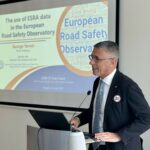
The European Survey of Road users’ safety Attitudes (ESRA) together with VIAS Institute organized with great success the ESRA: 10 years event of global road safety insights and impact which took place in Brussels, Belgium on 24 June 2025. This event reflected on the evolution of the ESRA initiative and its impact on road safety policy. Key findings from 10 years of research unveiled a dedicated Report and the new ESRA dashboard which can drive future improvements in road safety. Furthermore, ESRA4 was introduced, the next phase in the mission to create safer roads through data-driven strategies. 
 NTUA actively contributed with the following presentations:
NTUA actively contributed with the following presentations:

The European Transport Safety Council (ETSC) has released the 19th Annual PIN Report during the 2025 ETSC Road Safety Performance Index Conference which took place in Brussels, Belgium on 24 June 2025. According to this Annual PIN Report, 20,017 deaths on EU roads in 2024, a collective decrease of 2% compared to 2023, falling far short of the 6.1% annual reduction needed to achieve the EU target of a 50% reduction by 2030. ETSC also presented the PIN Award to Norway for its outstanding progress in improving road safety. Particular emphasis was given on how reducing speed could help reach the 2030 target of reducing road deaths and serious injuries by 50%. 


 within an experts’ panel discussion, during which NTUA actively contributed with the following presentation:
within an experts’ panel discussion, during which NTUA actively contributed with the following presentation:
























